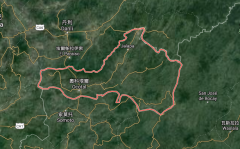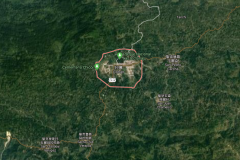Introduction and grading system of Honduran coffee what are the seven major coffee producing areas in Honduras?
Introduction to Honduran Coffee
For the mild Central American coffee, Honduras has a distinctive style and strong tone. Although the coffee industry has developed relatively late, it has a strong momentum, with not only high output, high sweetness, but also fruity and low acidity. Also nurtured a number of loyal.
The mountain terrain of Honduras is conducive to the cultivation of very diverse and good quality coffee beans, which is most famous for its rich fruit aroma and lively fruit acid. In recent years, improved planting and treatment have made the country one of the highest production of coffee beans in Central America, even exceeding that of Guatemala. Honduran coffee has soft low acidity and high fruit aroma, cocoa, roasted drupe, good sweetness to drink to balance and smooth.
In 1970, the Honduran government set up an official coffee agency and a coffee laboratory to assist coffee producers. Until 2011, coffee production exceeded that of Costa Rica and Guatemala combined. Honduras receives 3 million bags of coffee every year, providing the world with perfect coffee, unique coffee aroma and multi-quality, making it the second largest coffee exporter in Central America and the tenth largest coffee exporter in the world. Since 2012, yields have fallen sharply due to leaf rust (Roya), a fungus called Hemileia Vastatrix, which makes leaves fall short of photosynthesis and eventually kills entire trees. The worsening of leaf rust due to climate change and warming, coupled with extremely high rainfall, makes it difficult for coffee to dry and preserve, which is a major issue facing Hongguo today.

Six major coffee producing areas in Honduras:
1. Section area (Copan)
2. Obalaka District (Opalaca)
3. Montesius (Montecillos)
Gongma Agua (Comayagua)
5. Akata (Agalta Tropical)
6. El Paraiso
Honduran coffee growing flavor
The average planting height is more than 1100 meters above sea level. The main varieties of coffee are Arabica, including Kaddura, Kaduai, Pacas and Tibica, and the treatment is mainly washed with water. Honduran coffee has a wide variety of flavors, the best of which have complex fruity aromas and vibrant, juicy acidity. Mellow thickness and sweetness are quite high, all fruit tone, but sometimes with nutty, taffy aromas, is a lot of layers of coffee.
Coffee grading system in Honduras:
Strictly High Grown (SHG): over 1200 meters.
High Grown (HG): over 1000 meters.
Central Standard (CS): grow more than 600m above sea level.

Important Notice :
前街咖啡 FrontStreet Coffee has moved to new addredd:
FrontStreet Coffee Address: 315,Donghua East Road,GuangZhou
Tel:020 38364473
- Prev

Coffee producing area of New Segovia, Nicaragua introduces coffee flavor of three major provinces of New Segovia
New Segovia producing areas New Segovia (Nueva Segovia) is the general name of coffee producing areas in the three major provinces of Madriz, Esteli and Nueva Segovia in the north of Nepal. Coffee farmers in Nepal are used to sending coffee beans produced in Manz and Estel areas to Nueva Segovia coffee processing plants for processing and export in the name of Las Segovias producing areas. This area
- Next

The flavor characteristics of coffee in Koban area of Honduras are introduced in detail.
Copan is located in western Honduras, between the Copan, Ocotepeque and Lempira regions, and its name comes from the city of Copan. The proximity to Guatemala once again highlights the importance of knowing the true source of coffee. Growing coffee is the most important social and economic activity in the region. It produces the highest quality coffee in Honduras and enjoys the honor of being the top product in international competitions. In this area
Related
- Beginners will see the "Coffee pull flower" guide!
- What is the difference between ice blog purified milk and ordinary milk coffee?
- Why is the Philippines the largest producer of crops in Liberia?
- For coffee extraction, should the fine powder be retained?
- How does extracted espresso fill pressed powder? How much strength does it take to press the powder?
- How to make jasmine cold extract coffee? Is the jasmine + latte good?
- Will this little toy really make the coffee taste better? How does Lily Drip affect coffee extraction?
- Will the action of slapping the filter cup also affect coffee extraction?
- What's the difference between powder-to-water ratio and powder-to-liquid ratio?
- What is the Ethiopian local species? What does it have to do with Heirloom native species?

